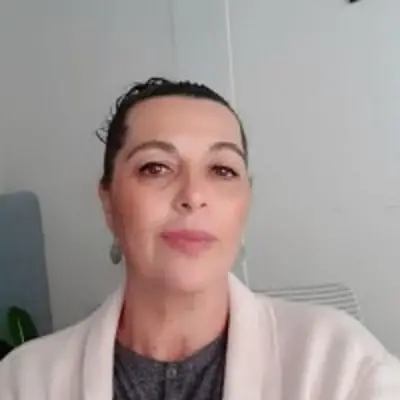Day in the life of
Communications Designer – Nahida Hajaj

I am a communications designer. We express information through visuals. Communication designers are especially adept at marketing design on both digital and print mediums. As the lead designer, I’ve built a specialty in infographics and data visualization also. Infographics involve high visuals and typography to bring facts to users.

Design for a dashboard solution for a client
My typical day
My typical work day is about 10 hours but can go longer depending on how long it takes me to get the concept correct. As the lead designer, I usually meet with my team every morning where we discuss concepts and go over our briefs. During this time, it’s my responsibility to get any questions answered that may be stopping the other designers. I also oversee quality and ensure that best practices are maintained towards graphics.
Early Morning
I review the requirements myself and then have a meeting with my team. We go over concepts and go through various images and discuss how to channel the ideas into graphics. At this stage, I’m very focused on how the designers connect to the concept and listening to them explain the concepts. I answer any questions. Afterward, they start their work.
Mid-Morning
In the mid-morning as the lead, I’m very busy with all the departmental leads. We go over past designs and future concepts. The other departments rate our designs from time to time show us how helpful we were to them. Feedback is absolutely essential and I find that it really helps us. Many times, there are also questions about particular design strategies. As a design lead, it is my job to explain the design in ways that non-graphical designers understand. I also often The departments that I meet with are video, development, and content on a daily basis. But sometimes, my meetings are with the CEO.
Late-Morning
Now, it’s time to check on the team. I first check on our designers who are often still doing mockups or research at this point. During this time, I can usually get a pretty good idea of where our designers are going and I correct anything. I answer any further questions and I look at their initial mockups and wireframes. How they merge the color theories in their designs, what they are doing and what we are not doing as a design department.
Early Afternoon
This is my time. I’ll be finishing designs that were submitted by designers the day before. If a design is close but lacking in some fundamentals. I usually finish it for quality. What I’m looking for here is that a designer understands the fundamentals. By that, I mean their command of space, shape, color, texture, size, etc. These are the things that a designer spends their whole life improving on.
Mid-Afternoon
The process basically continues. I put a key focus on ensuring that we get our designs finished or that any past designs get to production. Often during this time, I personally have both external and internal design components. By this point, I’m looking for real progress on the designs for the day.
Late-Afternoon
In the late afternoon, I check the day achievements of my team and their development and share my feedback with them. We use scorecards to evaluate designs and at least one design is scored each week and shared in our HRM. It’s also a good opportunity for me to see the progress of the team.
After Work Hours
Designers are passionate. Always researching new ways or tweaking my existing designs. I like to do a lot of learning or reviewing. Oftentimes, it’s a great time to relax also. Creativity really never stops and my brain is always designing.

Infographic design
Pros
The creativity is a major pro. Data visualization, despite the stereotypes, involves a high amount of creativity. Infographics are highly satisfying. I’d say the biggest pro is putting a concept in action that everyone can accept. For example, when I designed the courseware software interface along with UX/UI. We knew that we were doing something special.
Cons
The cons include the deadlines and the pressure to always innovate. If you come up with a creative design, someone will copy it. You have to challenge yourself constantly to come up with new techniques and that often involves lots of study. For advanced marketing, there are often KPI’s that tie directly to your designs, which will definitely show you how the audience felt about your design. You never know until this happens. Also staying on top of the software is always a challenge as it updates quite frequently.
Graphic Designers
design or create graphics to meet specific commercial or promotional needs, such as packaging, displays, or logos. May use a variety of mediums to achieve artistic or decorative effects.


.jpg)